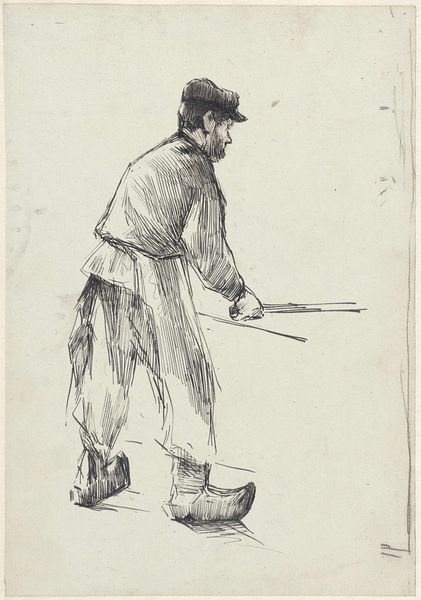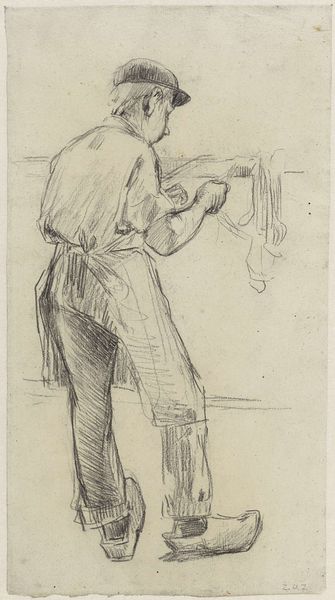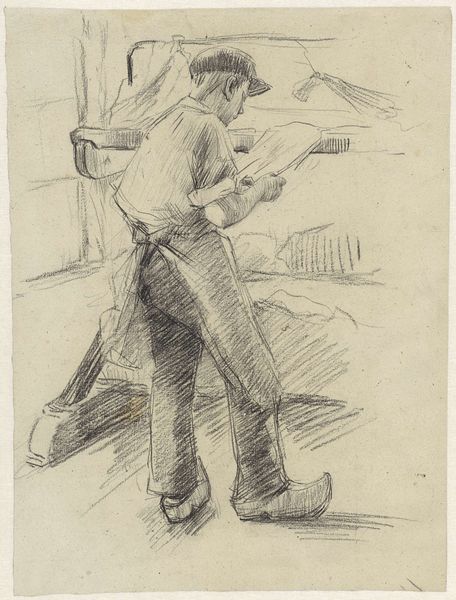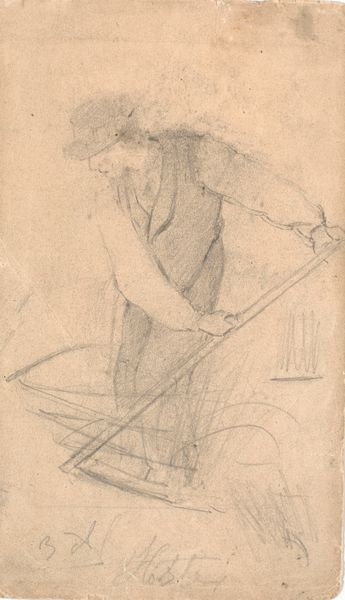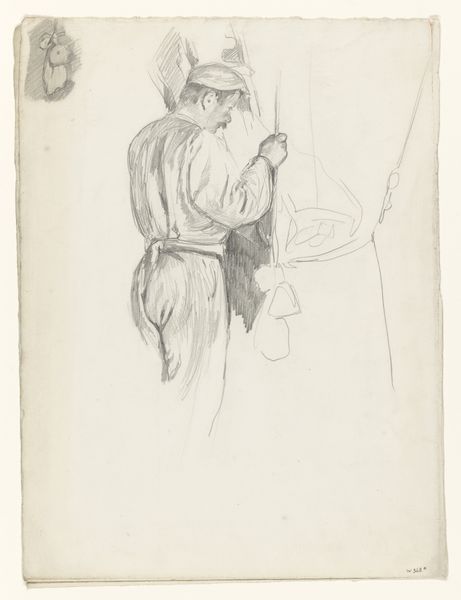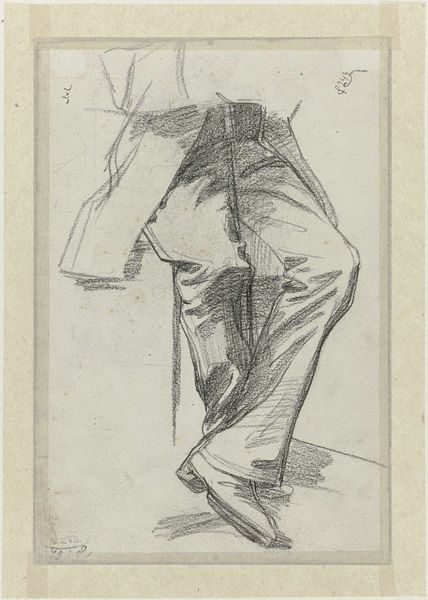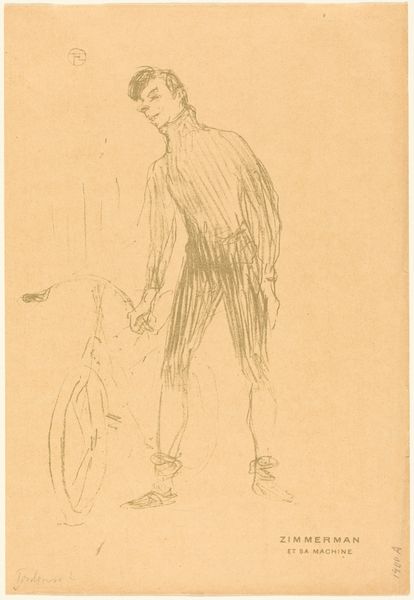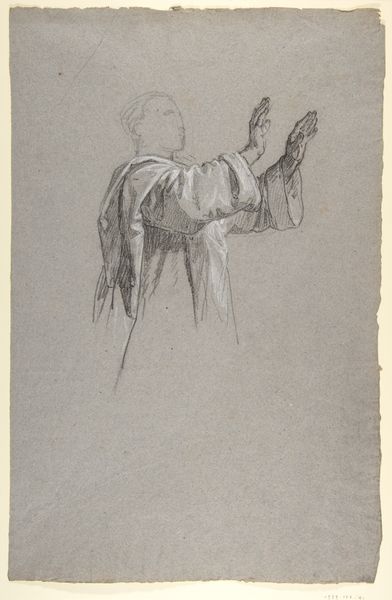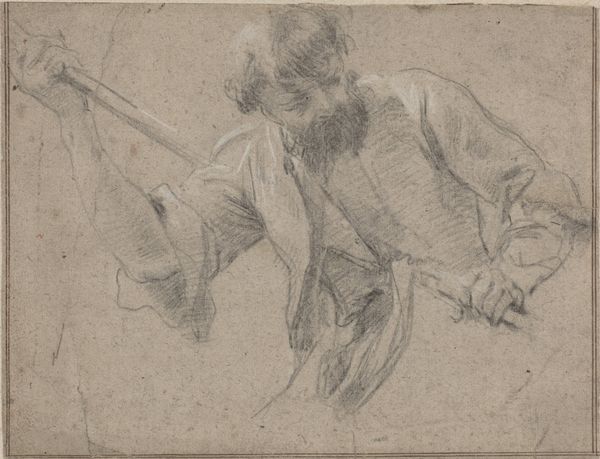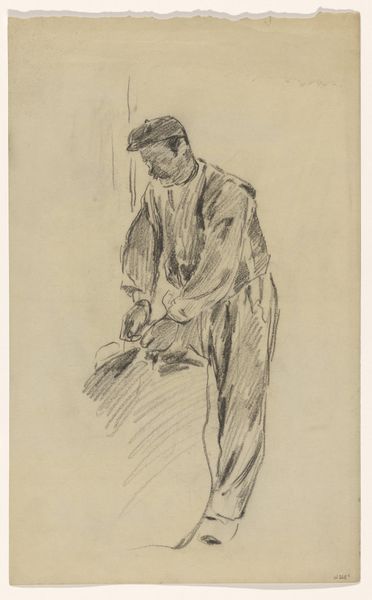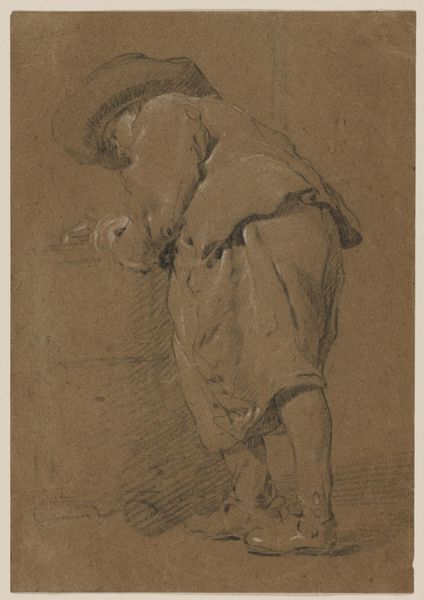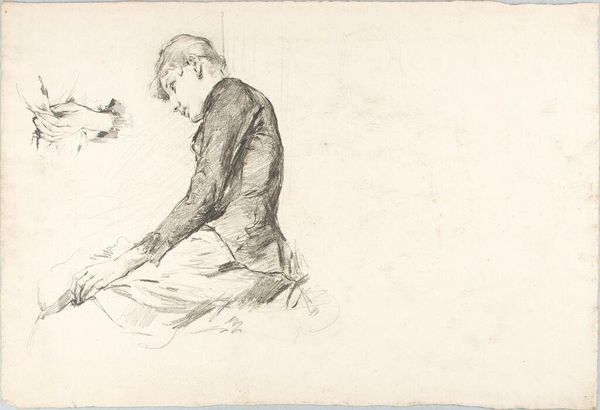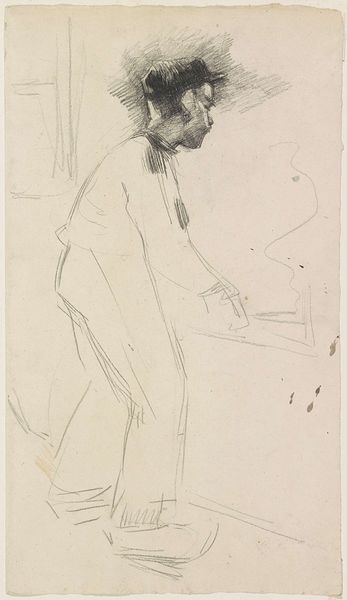
drawing, pencil, graphite
#
portrait
#
pencil drawn
#
drawing
#
dutch-golden-age
#
pencil sketch
#
figuration
#
pencil drawing
#
pencil
#
graphite
#
genre-painting
#
realism
Dimensions: height 300 mm, width 212 mm
Copyright: Rijks Museum: Open Domain
Curator: Right, so we are looking at "Arbeider aan het werk," which translates to "Worker at Work." It's a graphite and pencil drawing by Anthon Gerhard Alexander van Rappard, made sometime between 1868 and 1892. Editor: Immediately, it strikes me as a portrait of labour, literally and figuratively etched with lines of effort and potential exhaustion. It's very evocative in its simplicity, even though we're just seeing what looks like a quick sketch. Curator: It does have a sketched feel. You can see how he's capturing the figure with these really delicate pencil strokes, and yet there's a weightiness to the pose, a sense of burden, don't you think? The man's stance, the set of his jaw… It all conveys hard work. Editor: Absolutely. And given the timeframe, and Rappard's social consciousness, I immediately consider the burgeoning labor movements. How is he positioning this individual within the broader context of industrialization and worker exploitation? It demands we confront the social and political implications embedded within representations of labor. The worker's almost stoic expression prompts considerations of class, inequality, and the dignity—or lack thereof—afforded to working-class bodies during this historical moment. Curator: Precisely. Although subtle, you get the impression Rappard had enormous empathy for this working class. You see that particularly in the hunched back and weary stance that speaks volumes, regardless of its "unfinished" quality. Makes me think what that man must be dreaming. What would he conjure for himself if he had my life, eh? I bet you his dreams involve things more complex than I might anticipate... Editor: Absolutely. What does emancipation look like from his vantage point? Rappard’s rendering—simple as it may seem—demands such lines of inquiry, inviting us to excavate layers of meaning embedded within the artwork’s textures and representational choices. And also a bit on how art like this could affect labor reforms. Curator: Agreed. There’s a power in Rappard’s understatement that leaves you pondering on those silences long after you walk away from it. A stark statement, quite honestly. Editor: Beautifully said!
Comments
No comments
Be the first to comment and join the conversation on the ultimate creative platform.
